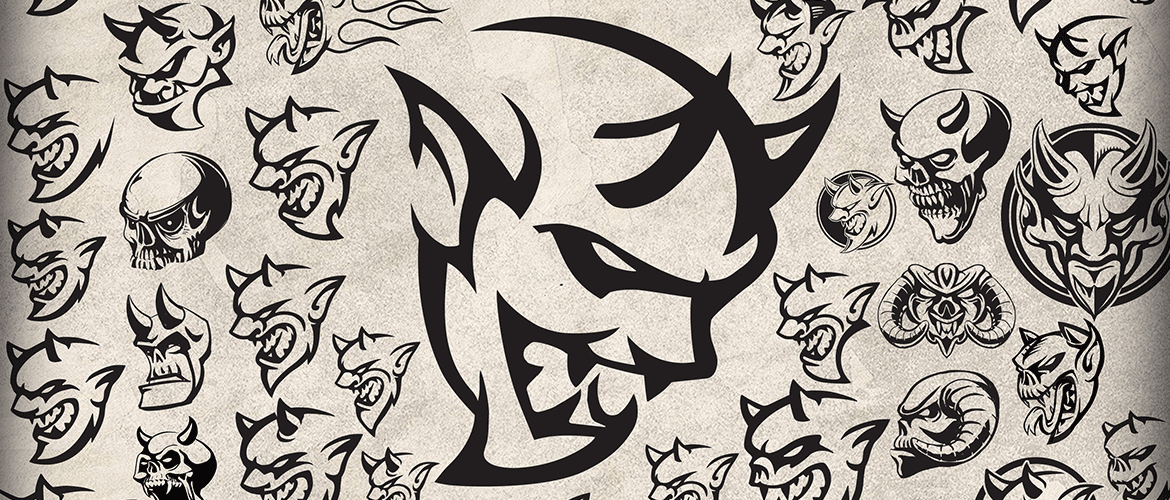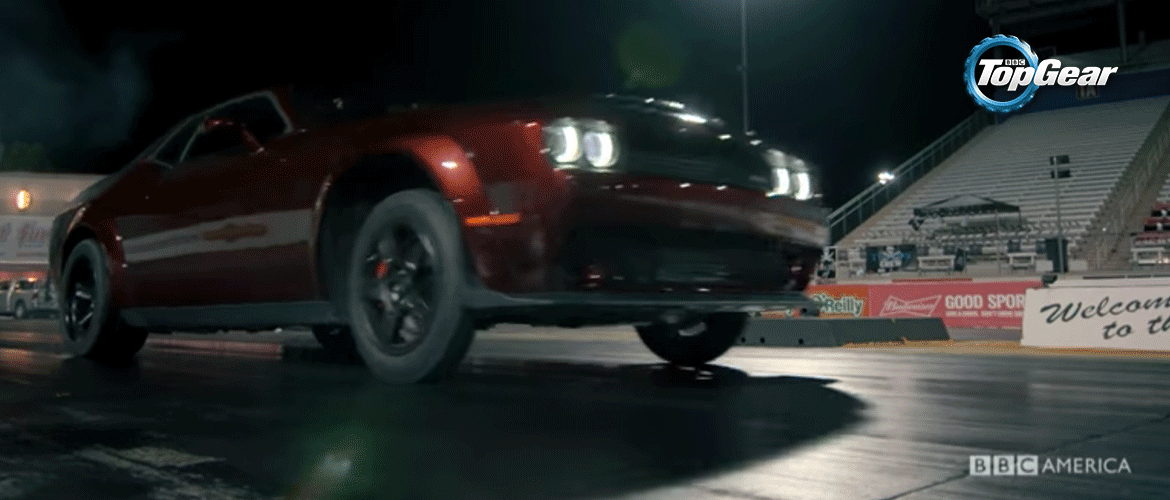Rebirth of a Legend: The Story of the Recreation of the Demon Logo – Part 1
7 years ago Showcase
I’m sure you’ve thought quietly to yourself “Why did they do it that way?” or “I wonder how many of these they made before they landed on this design?” There is so much mystery shrouded by the auto industry, and rightfully so! It’s very scarce that anyone gets to see all the iterations of a design of a vehicle, if any at all. Occasionally, someone digs up an old file propping up a table in a paint booth and opens it to find lost sketches showing the magic designs of “what could have been”. Personally, I LOVE this stuff and wish more of these sketches would surface. Even if none of them even made it to a clay model, it’s just plain old fun to flip through sketches of transportation design.
I’ve been granted a rare opportunity to let you peek behind the design curtain here at the Dodge//SRT®studio. No kidding around here, we have some pretty tight security when it comes to designs. You wouldn’t believe how many checkpoints you must go through just to enter this building, let alone get access to the Product Design Office here in Auburn Hills, Michigan. So, get cozy, because I’m about to tell you about a process that you’ve probably never imagined when it comes to designing at FCA.
This story starts literally on my first day of work at FCA. The date is March 7th, 2016. After getting a basic tour of the design office, I met with some folks from the Dodge Studio to talk about working on a project code of “ADR”. A full-scale clay model sat at the edge of the studio mocked up with a vinyl covering of bright red and a matte black hood, roof and deck lid. At first glance, this could have been another version of the Hellcat, but something was different. After a few seconds of studying, the distinctive features really started to pop out. First, a huge hood scoop nearly crossing the entirety of the engine bay. Next, wheel flairs that bulged out of the sides of the fenders, giving this a true aggressive stance. And, finally, the blacked-out wheel with skinny tires in the front. It was unique! This was a very confidential product for the Dodge//SRT brand. If you’re in the know and follow all the Vipers, you’ll likely have noticed one model known as the “ACR” or “American Club Racer”; so without asking what the “D” stood for, I was guessing it may be “Drag” and put the rest together. Dodge Brand had also been entertaining the idea of reviving the “Demon” nameplate. But at that time, it wasn’t clear on which direction this was going to go in; and in many ways, it was an open project to explore. And this exploration helped to determine what this vehicle mark has become. Exciting!
Like I said, all of this began literally on day one for me. I didn’t even have a computer or a desk phone, just a sketch pad, a few sharp pencils and a couple of sharpies to start sketching out ideas. Walking through the door and landing what I could consider a dream project to work on was more than I could have hoped for. Doodling skulls, devils and, basically, heavy metal art back in high school on my book covers and folders was something I was now getting paid for? How could I have lucked out better and have this fall in my lap?!
Step one in design is doing some research. The more history you can get on a topic, the more design influences you can draw upon, thus making your work more meaningful in the end. This process is simple: Collect as many historic examples as you can find on the topic and print them out. Part of this research was to define “demon”: an evil spirit or devil, especially one thought to possess a person or act as a tormentor in hell. “Oh man!” I thought. “That’s pretty heavy! Let’s cut that down to just ‘an evil spirit or devil’ for now.”
From that definition, we have two paths. Path one: Explore a devil, like the original Dodge Demon mark, who resembles the “Lil’ Devil” from comic books of its time. This cartoonish approach to Dodge – and more specifically Plymouth vehicles like the Dodge Duster (Tasmanian Devil-ish character) and the Plymouth Roadrunner (closely resembling the Looney Toons Roadrunner character) – would perhaps dig too far back into nostalgia. Path two: Explore the “evil spirit” angle. A spirit is not something easy to design in words, let alone as an icon. Not even Amy Allan from The Dead Files and her ghost-based courtroom stenographer can nail down what an “evil spirit” looks like. So I set the second path aside for now and focused on a devilish character.
There are indeed devils in or on historic cars in the form of hood ornaments or radiator caps. Typically, these would be an aftermarket add-on. I did not find any direct car companies that produced a “demon” of their own. But if you search for automotive devils, they are certainly out there and there are many with similar features: Long faces, skinny bodies, ribbed horns, bulbous noses, hooked chins/goatees – pretty much what you think of when someone says devil. I took some of these traits into account while sketching. If you’ve seen the page of the Dodge Demon sketches, you can clearly see some of these traits coming out. Not only were there many examples in automotive, but also in many other older products, ranging from lighter fluid and alcohol, to spring water and store-bought magic tricks!
An icon mark for the Demon was pursued, but so was the lettering. To get a distinct lettering that could match the icon, the idea was to do something completely different from what was already in the DNA of Dodge//SRT lettering style. This was a suitable endeavor as this particular vehicle was basically something never meant to be: There is no business case for a factory-built drag racing machine with over 800 horsepower with a warranty. So, in my mind, it came down to one question: “Why should it look like everything else Dodge has on the road?” For the design influence, I thought, “This is something sure to become a legend; therefore, the style should be something that looks like it was torn from the pages of an old tome.”
So all of this was on day one at a new job. It was a lot to take in and, at the same time, it was exactly the dream gig I’d hoped for! Little did I know what a design review would be like in the Product Design Office at FCA or what I was in for!
At the risk of sounding like the narrator on an episodic television show from the 1970s, you’ll have to tune in next time when my story continues in Part 2: The Review.
By Keven Carter (Product Design Office-Badging)




